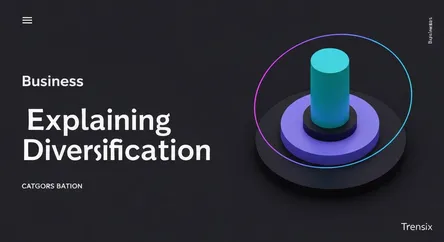Business
Explaining Diversification

Learn about diversification, the crucial investment strategy of spreading investments across various assets to reduce risk and protect your portfolio.
What is it?
Diversification is a core risk management strategy in finance, famously summarized by the phrase "don't put all your eggs in one basket." It involves allocating investments among various financial instruments, industries, and other categories to minimize the impact of any single asset's poor performance. By investing in a mix of assets like stocks, bonds, real estate, and commodities, an investor can smooth out unsystematic risk events. The goal is that positive performance in some investments will neutralize negative performance in others, leading to more stable returns over time.
Why is it trending?
In times of economic uncertainty, market volatility, and fluctuating inflation rates, diversification becomes a major topic of discussion. Investors are increasingly seeking ways to safeguard their capital from sharp downturns in specific sectors, such as technology or energy. The rise of accessible investment platforms, exchange-traded funds (ETFs), and robo-advisors has also made it easier than ever for retail investors to build a diversified portfolio without needing vast amounts of capital, pushing the strategy into the mainstream.
How does it affect people?
For individuals, diversification is fundamental to long-term financial health. It helps protect retirement savings, education funds, and other investments from catastrophic losses. A well-diversified portfolio can provide peace of mind and a more predictable growth trajectory, reducing the stress associated with market swings. For businesses, diversification can mean expanding into new product lines or geographic markets, which helps stabilize revenue and protect the company from downturns in its primary industry. It’s a foundational principle for building resilient financial futures for both individuals and organizations.